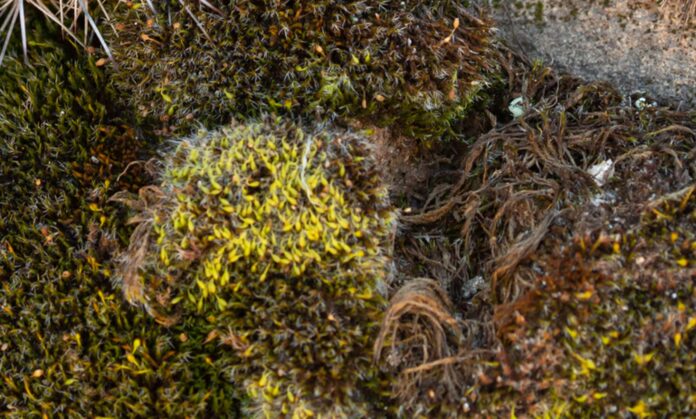Elon Musk has often stated that he started SpaceX to save humanity from an extinction-level event on Earth and turn us into a multiplanetary species. A city on Mars has been his goal with the Starship his Mayflower.
The problem is simple. Mars is inhospitable to human life. The only way we can survive on that planet is to live in bubbles or below ground. The journey taken by human colonists will be fraught with danger. Exposure to cosmic rays over the long voyage between Earth and the Red Planet may result in high levels of cancer in those who survive the trip. Then there is the need to create a self-sustaining closed system with enough food, water, essential material resources and infrastructure to allow a colony to establish itself.
Always remember when we are talking about Mars, the environment is harsher than Antarctica with no breathable air.
Enter Syntrichia Caninervis
S. Caninervis is a moss that grows in Tibet and Antarctica. Bringing it to Mars and planting it there would be an interesting terraforming experiment. S. Caninervis is a photoautotroph. It would convert light from the more distant Sun into organic compounds allowing it to reproduce. It has high-stress tolerances and can thrive in high altitudes with similar air pressure conditions to that found on the Martian surface. It can live in an atmosphere composed largely of carbon dioxide. And it can withstand radiation levels equal to that which would occur on the Martian surface.
If there is any living thing on Earth that can make the transition to a Martian environment it is S. Caninervis. In a recent experiment, scientists subjected it to a simulated Mars environment. The moss survived over five years at temperatures of -80 Celsius (-112 Fahrenheit). Nighttime temperatures on Mars drop to as low as -60 Celsius (-76 Fahrenheit) at the equator while daytime temperatures can be as high as 27 Celsius (80 Fahrenheit). In equatorial regions of Mars, therefore, S. Caninervis could handle the planet’s temperature extremes.
But what about at the Martian poles? To simulate those conditions the experiment used liquid nitrogen exposure with temperatures at -195.8 Celsius (-320.44 Fahrenheit). This exceeds the daytime highs of -55 Celsius (-67 Fahrenheit) and lows of -130 Celsius (-202 Fahrenheit) found in the planet’s polar regions. Under extreme liquid nitrogen exposure for a month, the moss survived. Here too, it would handle the Martian environment.
How does S. Caninervis do it? It is called “drying without dying.” When stressed the moss becomes dormant. Its physical structure conserves water and provides photoprotection from ultraviolet radiation. Even when completely dehydrated it maintains large amounts of sucrose and maltose to serve as osmotic agents and help stabilize it over long dormant periods. Then when conditions improve, it awakes and starts to grow again.
Do We Want to Terraform Mars?
Humans could survive on Mars without altering the planet’s ecology should native life exist there. We don’t have to introduce Earth extremophiles if we don’t want to.
The two current active NASA rovers, Curiosity and Perseverance, have been sent to Mars to find conditions suitable for life in the past and present. The geological record indicates the planet had a warmer and wetter phase with ample surface water lasting for millions of years. Here on Earth, water is where life began.
The Mars of the present, however, can only briefly support water on its surface in the near vacuum-like atmosphere. If life existed in the past there, its survivors would likely be extremophiles like S. Caninervis.
The suggestion and experiments by scientists looking at terraforming note that by introducing Earth life we may destroy any native surviving Martian extremophiles. If S. Caninervis flourishes it will alter the Martian atmosphere by adding oxygen. It will also sequester carbon in the regolith, changing soil conditions and making it possible to introduce other Earth-candidate species.
Should we be concerned about what this can potentially do to existing Martian life even if only microscopic? Yes. If we are to do the great terraforming experiment, will it be possible to create conservation areas for native Martian species so that they can be studied and continue to exist?
We consider the emergence of life here on Earth to be a rare event in The Universe. If so rare, we should then consider life found elsewhere to be rare and subject to the best protections we can provide.
On Earth today, we are trying to make amends for the widespread environmental destruction of our human past. Let’s not reproduce acts of environmental indifference if and when we colonize Mars or any other place in our Solar System or elsewhere in the Universe.









